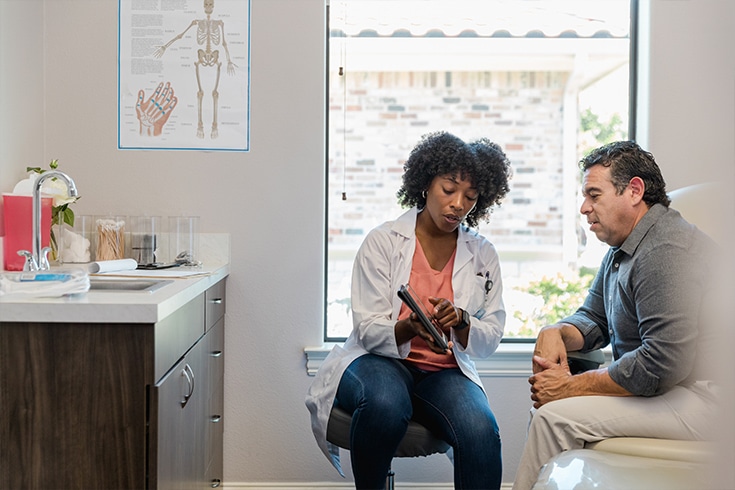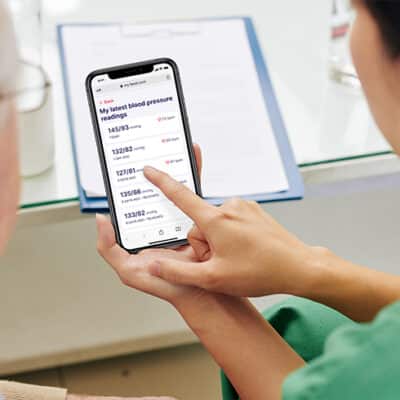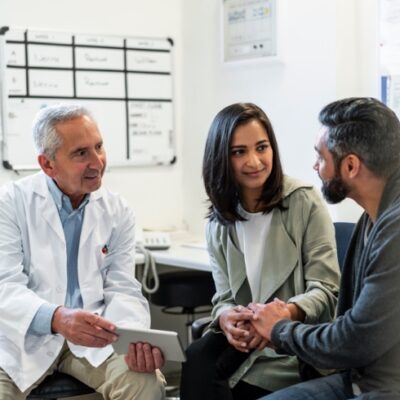The healthcare industry has been experiencing a significant shift towards patient-centric care. Consequently, remote patient monitoring (RPM) has emerged as a preferred care delivery method among patients, providers, and health systems alike. This approach extends beyond traditional office settings, offering increased access and efficiency. However, its appeal goes beyond mere convenience for patients.
Many healthcare providers are drawn to its myriads of benefits, including better management of chronic conditions, increased patient engagement, and most importantly, improved health outcomes. Through RPM, clinicians can remotely monitor their patients’ health status, adherence to treatment plans, and progress over time without the need for frequent in-person visits, enabling more timely interventions, earlier detection of potential health issues and more proactive patient care.
While RPM can be applied across various medical conditions, certain patient groups stand to benefit the most. This care delivery model is particularly beneficial for patients with chronic diseases, elderly individuals, post-operative patients, and those with complex medical needs who require regular monitoring and proactive care management. Below we have included some of these patient types and review why RPM may be considered as part of their care plan.
Patients with Chronic Diseases
Patients with chronic diseases can greatly benefit from RPM. These patients often require regular monitoring of vital signs, medication adherence, and lifestyle management. RPM is particularly helpful in managing chronic conditions because it provides a window into patients’ lives outside their scheduled appointments. With data collected over time, care teams can manage and treat chronic conditions in a way that is timely, meaningful, and realistic to the patient’s lifestyle, fostering a deeper connection between healthcare providers and their patients.
Several chronic conditions benefit from RPM. These include, but are not limited to:
- Congestive Heart Failure (CHF): RPM solutions can measure a patient’s blood pressure for consistency and weight for onset of fluid (For example, a 3 lb. weight gain overnight)
- Diabetes: RPM solutions can measure glucose levels and report for intervention as needed
- Chronic Obstructive Pulmonary Disease (COPD): RPM provides consistent measurement through a spirometer and pulse oximeter
- Kidney Disease: RPM offers weight measurements for the onset of fluid and high blood pressure
- Hypertension: RPM provides blood pressure measurements
- COVID-19: RPM devices such as thermometers, pulse oximeters and spirometers can measure temperature, oxygen levels, and lung capacity
Elderly Patients
The elderly population, especially those with multiple chronic conditions, often face challenges in accessing healthcare services regularly. RPM allows healthcare providers to monitor their vital signs, activity levels, and medication adherence from a distance. This enables early detection of health issues and promotes aging in place by providing timely interventions to prevent health decline and improve overall quality of life.
Post-operative Patients
After surgery, patients require close monitoring to ensure proper recovery and to detect any complications early on. RPM enables care teams to remotely monitor post-operative patients’ vital signs and pain levels, reducing the need for frequent in-person visits. This proactive approach ensures that any potential changes in a patient’s condition are addressed more promptly.
Patients with Mental Health Conditions
RPM is not only limited to physical health conditions; it can also be beneficial for patients with mental health conditions such as depression or anxiety. Healthcare providers can monitor patients’ mood changes, sleep patterns, and medication adherence, enabling more timely interventions and providing support, which is crucial for managing mental health conditions effectively.
Patients Requiring Rehabilitation
RPM can also benefit patients undergoing rehabilitation, whether for cardiac rehabilitation, physical therapy, or stroke recovery. It allows healthcare providers to monitor patient’s progress, including adherence to rehabilitation exercises and recovery milestones, providing personalized feedback and interventions to optimize the rehabilitation process and improve outcomes.
High-Risk Pregnancy Patients
Pregnant women with high-risk pregnancies, such as those with gestational diabetes, hypertension, or a history of preterm labor, require frequent monitoring to ensure the well-being of both mother and baby. RPM enables healthcare providers to monitor maternal vital signs and other relevant parameters, allowing for early detection of complications and timely interventions to optimize pregnancy outcomes.
While the utilization of RPM can extend across a large variety of patient populations, these are several types of patients that stand to significantly benefit from this type of care delivery. Of course, with any new treatment regimen the healthcare provider must decide the best course of action based on the individual’s health condition, goals, and lifestyle.
Start The Path Toward Better Patient Care
Have questions about how remote patient monitoring for healthcare will work for you and your patients? Let’s have a conversation.
Access the Latest RPM News
Stay up to date with the latest news, articles and webinars about remote patient monitoring and telehealth.
"*" indicates required fields



